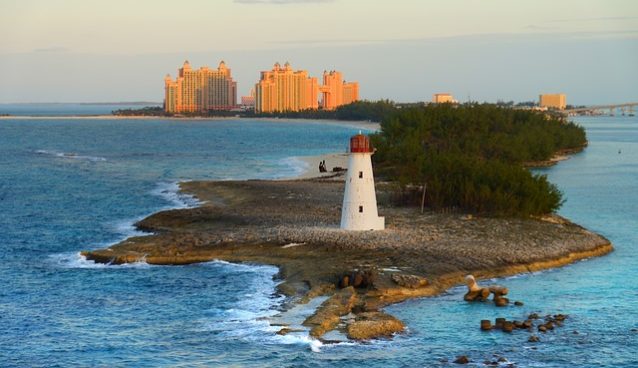The Geology of the Bahama Islands

The Bahama Islands are unique in that they rise up as a rocky plateau from the ocean floor. The chain’s 700 islands sit on vast platforms of carbonates that are thousands of meters thick and date back millions of years.
The Bahaman Archipelago consists of two carbonate banks and a chain of carbonate platforms. The Little Bahama Bank is in the northern Bahamas, while the Great Bahama Bank extends from central to southwestern Bahamas. Unlike other Caribbean islands, the Bahama islands largely consist of limestone rather than volcanic rock. Coral reefs have grown on the limestone plateaus to form the islands and crystal blue waters we now see. The islands’ beautiful beaches consist of fragments of coral, sea shells, and limestone.
Scientists believe that the Bahamas Islands were originally formed millions of years ago when earth’s single continent, Pangea, broke apart. The subsequent collision between the North American and Caribbean plates formed the basement rocks upon which the archipelago now rests. In essence, the land that now forms the islands was once under water and rose above the ocean as the continental shelves shifted. Dunes formed, eventually solidified, and were shaped by the rain and sea.
The unique geology of the islands has been the subject of frequent study. Researchers from the University of Miami (UM) Rosenstiel School of Marine and Atmospheric Science recently advanced a new theory. They argue that the underwater towers that support the islands today may have actually been created by bacteria and sand that traveled across the Atlantic Ocean from the Sahara Desert.
Today, the landscape continues to evolve as new sediment is deposited by currents, waves, and winds. The same forces also slowly erode the beaches and reshape the islands. Scientists are also conducting research on the platforms of the Bahamas to project the impact of the rising sea-level in other low-lying coastal areas, including the Southeastern United States.
